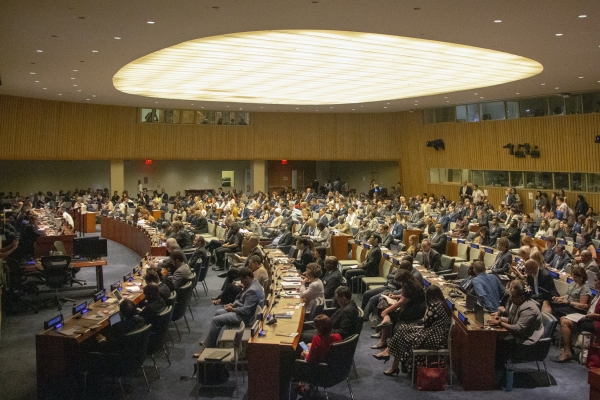With its Resolution 71/258, the United Nations (UN) General Assembly convened a conference in 2017 to negotiate a legally binding instrument to ban nuclear weapons aimed at achieving their total elimination. The treaty which emerged from this conference entered into force on Friday 22 January 2021 after having received the necessary 50 ratifications. Since this date, state parties are prohibited from developing, testing, producing , possessing, stockpiling, using and threatening to use nuclear weapons. Equally, it is forbidden to station or to deploy nuclear weapons of a country which is not a state party on the national territory. But the ban is largely symbolic since the United States and the world's other - official and non-official - nuclear powers have not signed the treaty.
The TPNW includes a comprehensive set of prohibitions on the participation in any nuclear weapon-related activity. State Parties are obliged to prevent and suppress any activity prohibited by the TPNW that takes place under their jurisdiction or control. In addition, ratificants are required to provide appropriate assistance to victims of the use or testing of nuclear weapons. Finally, they shall take all necessary measures for environmental recovery in areas that are contaminated as a result of activities related to the testing or use of nuclear weapons.
The dialogue on the humanitarian impact of nuclear weapons has been gradually opened up. Especially the three conferences convened in 2013 and 2014 in Norway, Mexico and Austria, in which a significant number of countries participated together with the International Committee of the Red Cross and hundreds of representatives of non-governmental organisations, mainly coordinated by the International Campaign to Abolish Nuclear Weapons (ICAN). These conferences lobbied for the necessity to advance negotiations on nuclear disarmament and sought to explain short- and long-term effects of detonating a nuclear weapon.
The endeavour to achieve a legally binding instrument to prohibit nuclear weapons by raising awareness of the humanitarian consequences and of the impact of the use of nuclear weapons on humans has been promoted for years. Although many countries agree that a total ban on such weapons is the best policy option, others - especially those officially possessing nuclear weapons - take a different view and oppose the treaty.
The aim of the TPNW is to strengthen the international legal framework and gradually lead to a ban on the possession and use of nuclear weapons. However, opponents point out that no appropriate conditions for disarmament do currently exist - in particular that the main actors that should adhere to the treaty - the nuclear powers - have not ratified it. Among the latter are member states of the North Atlantic Treaty Organisation (NATO), which in 2016 reconfirmed its commitment to nuclear deterrence. It is these problems that raise questions about the impact of this new international instrument and its ability to create a normative order leading to effective results regarding the elimination of nuclear weapons.
To learn more, please read:
https://www.un.org/disarmament/wmd/nuclear/tpnw/
https://www.europarl.europa.eu/thinktank/en/document.html?reference=EPRS_BRI(2018)614664
Author: Carla Pintor







